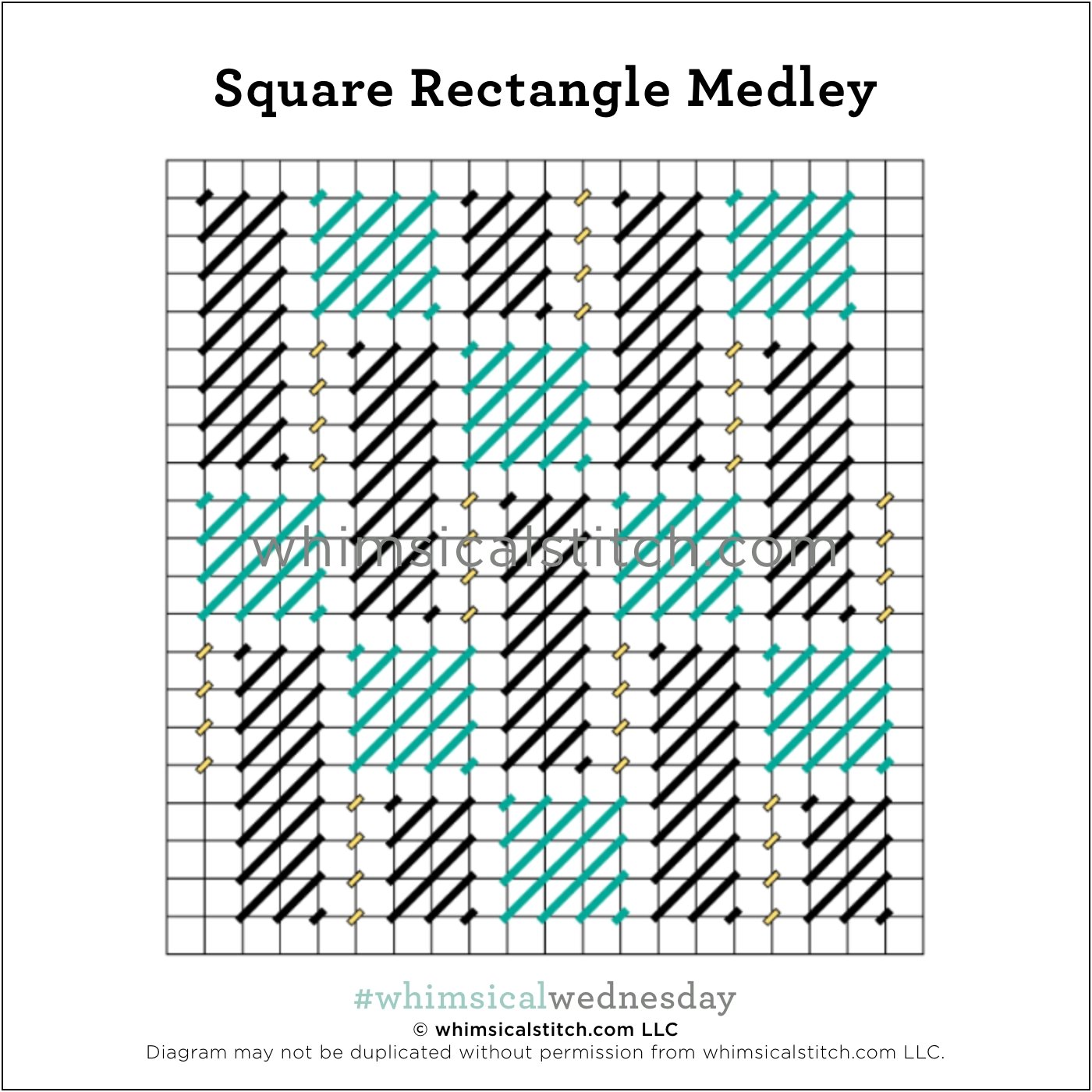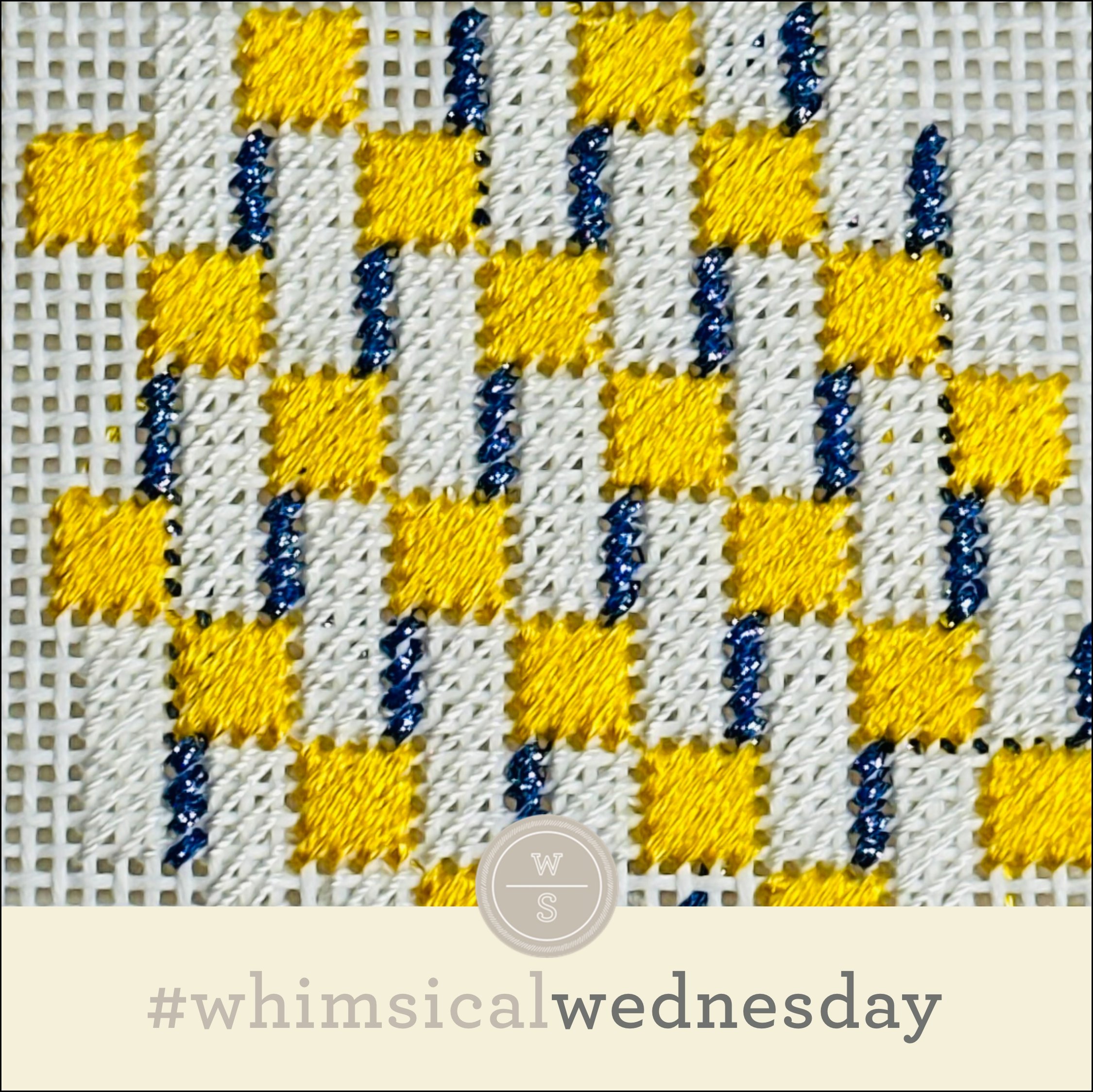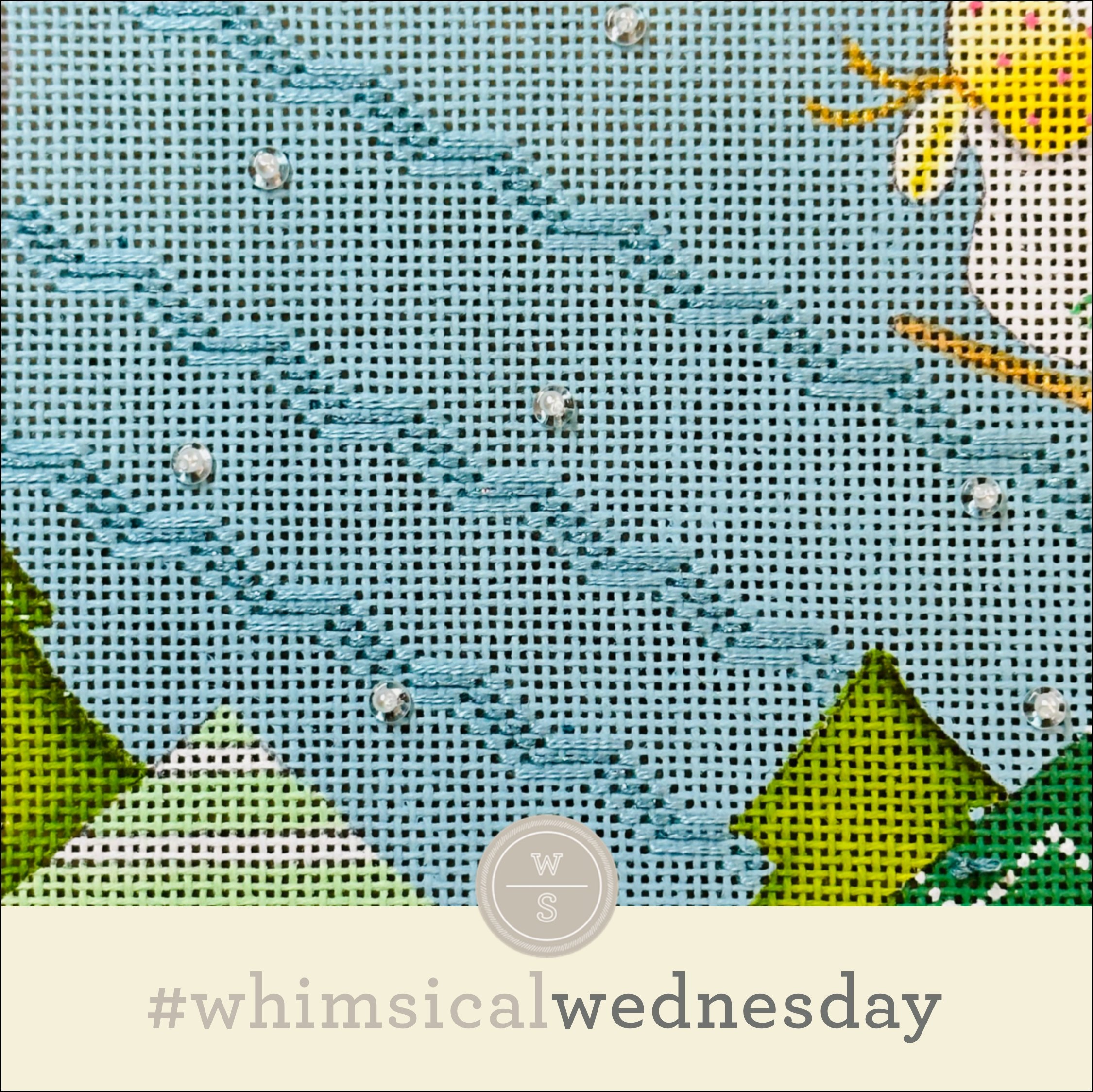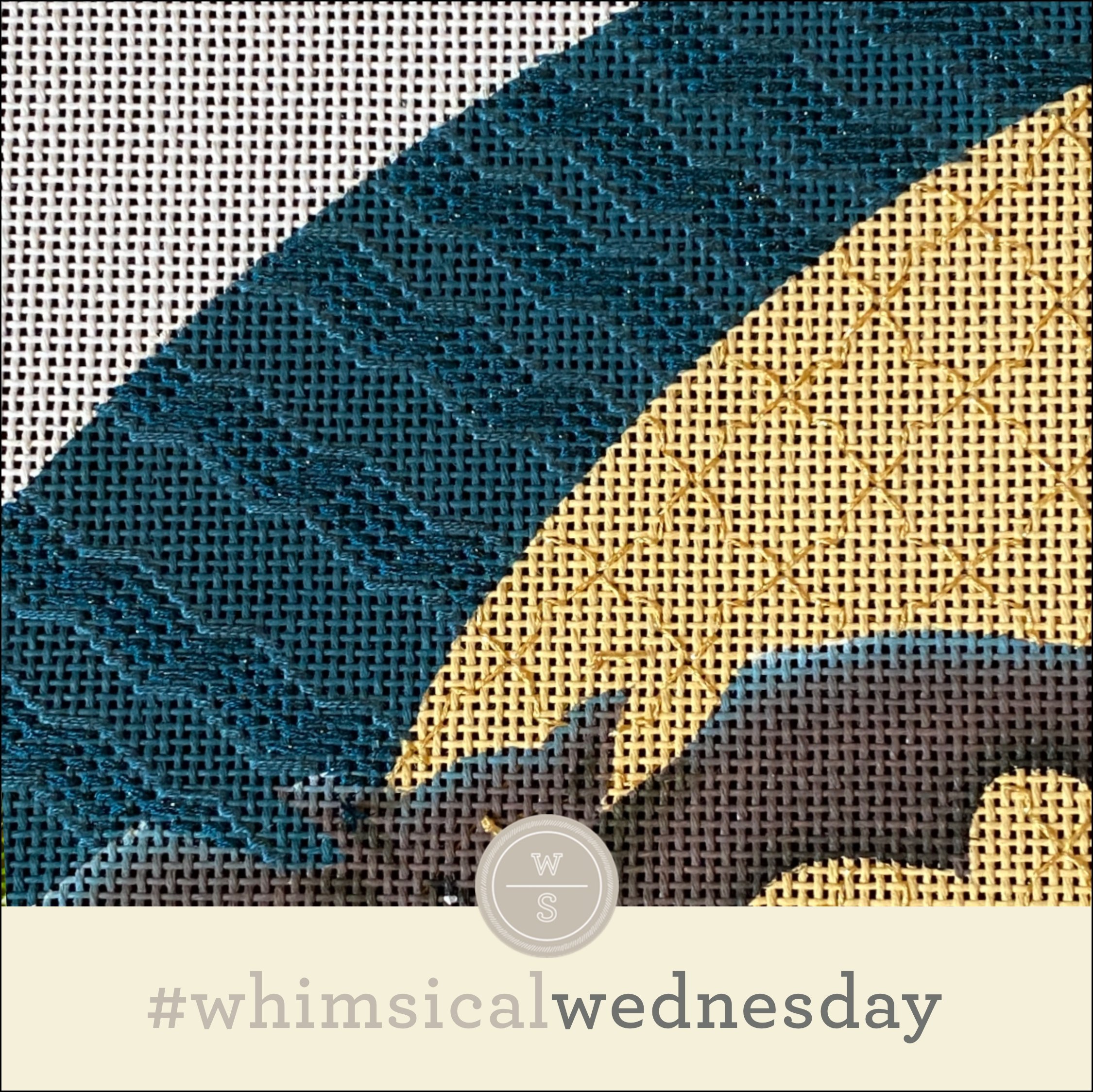Today’s stitch may look familiar. I used a version of it for a background late last year. As completed hydrangeas emerged (with Silk Lame 18), the background started to disappear. So I did something about it.
Click the image to see #whimsicalwednesday and #smallspacesunday Stitched Sample Gallery on Instagram.
The original background was stitched with Soie D’Alger. Yes, I considered changing it altogether, but I wasn’t looking forward to removing something I liked. It needed something to stand up against the Silk Lame. Enter Radiance, the new metallic from the Meredith Collection. I love the sparkle and subtle color that Radiance adds. To balance the rows, I chose to add single tent stitches in the opposite direction. The picture on the far right illustrates the ghost stitching (or fake stitching) I used to get to the other side of the leaf.
I’m really happy I hesitated to pull out the original stitching. The addition of the metallic really pulled it together and can stand up to the Silk Lame 18. I can see either version of this stitch as a background for a still life, a monogram, or a simple saying.
The next big question is how the background will end on each edge. Since I didn’t plan ahead on this part, I’m hoping I can add a border with this stitch. Stay tuned.
I hope you have a spot for this stitch. Enjoy!
As you are auditioning stitches (from any stitch source), count the number of canvas threads on the diagram that match your mesh size. And there you have what an inch of the stitch will look like. Evaluate that against the area where you plan to use the stitch and make your final decision. If you start integrating this step into your stitch selection process, you may be surprised at how many stitches you think are large are much smaller than you realize.
By (sometimes) including this step in my own process, I find I am now integrating much longer stitches than I ever thought I would. I used to think a stitch six rows long was super big. I have very much changed my tune, which has helped me expand my creativity, especially for large-space stitches.
Today’s stitch diagram, along with all other #whimsicalwednesday and #smallspacesunday stitch diagrams, can also be found on a Pinterest board here. Be sure to follow whimsicalstitch.com on Facebook, Pinterest, Instagram, and Twitter.
If you like what you see on this blog, there's more. Mary’s Whimsical Stitches is a series of four books offering contemporary how-to collections of more than 200 stitches (in each volume) for all stitchers, regardless of skill level. All books include updated and sequenced diagrams from this blog, plus a collection of all-new stitches from private lessons and other class projects. Visit here to find a needlepoint retailer that carries my books.
New to needlepoint or looking for a refresher? Please download a handy how-to guide covering basic needlepoint stitches and stitch compensation techniques along with new top-line information on needlepoint materials and tools, how to handle threads, and other helpful needlepoint resources.
whimsicalstitch.com also sells Stitch Guides and Stitch Concepts for Melissa Shirley Designs, Zecca Designs, Sandra Gilmore, Purple Palm, Maggie, and Penny MacLeod, and many more. Click here to see the newest guides and click here to see the entire collection.
I hope you have the perfect spot for this stitch! Please enjoy! Have a wonderful #whimsicalwednesday!
A Note about Diagrams
I use color in diagrams to make them as clear as possible. The primary function of different colored lines is to illustrate a stitch sequence. For example, the layering of colors demonstrates you add them in that order. They can also provide ideas on integrating additional threads (one line for each color). Or, you can use the same thread for all color lines. That's where I encourage you to use your imagination for the space you are stitching!




























